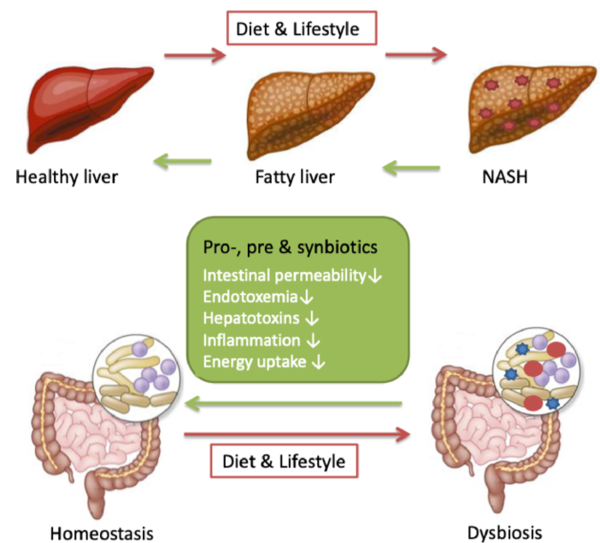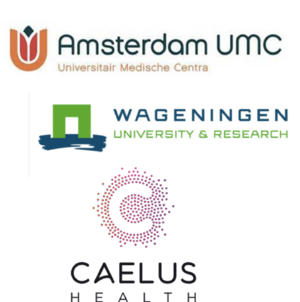Butyric acid-forming intestinal bacteria: a new treatment against non-alcoholic fatty liver
Every year, more patients develop non-alcoholic fatty liver disease (NAFLD). This increasing liver problem is strongly related to (extreme) overweight and type 2 diabetes. The excess of liver fat can turn into liver inflammation, followed by fibrosis and scarring, and ultimately by cirrhosis and liver failure. In addition, many patients suffer from cardiovascular disease, because NAFLD promotes high cholesterol and inflammation, two processes that greatly contribute to atherosclerosis.
The problem of NAFLD is still insufficiently recognised by doctors and patients in the Netherlands. There is also no registered drug treatment available yet. On the other hand, given the extent and severity of the problem, there is a clear need for treatment, all the more so because lifestyle management alone cannot stop the disease process in severe forms of NAFLD.
A new insight is that intestinal bacteria influence the NAFLD disease process. Certain gut bacteria convert nutrients into substances that can inhibit liver inflammation in the NAFLD disease process. It was showed that patients with a severe form of NAFLD liver inflammation have fewer potential protective gut bacteria. The most important potentially protective intestinal bacterium is Eubacterium hallii, probably due to the production of the substance butyric acid. In an overweight mouse model, treatment with E. hallii produced less liver fat and fat production in the liver. Encouraged by these positive findings, - the Amsterdam UMC (location AMC and VUmc), in partnership with Wageningen University and Caelus Pharmaceuticals - want to develop E. hallii as probiotic treatment for NAFLD.
In this proposal a crucial developmental step of this new treatment will be taken: testing E. hallii in mouse models that are specific for NAFLD (not just overweight). Also the protective effects of E. hallii and of butyric acid will be investigated, aided by a NAFLD liver cell model. If the findings are positive, this paves the way for an innovative treatment of patients with NAFLD: the E. hallii probiotic.

This collaboration project is co-funded by the PPP Allowance made available by Health~Holland, Top Sector Life Sciences & Health, to AMC to stimulate public-private partnerships. For questions, please contact AMC directly via the following email address tki@ixa.nl.

